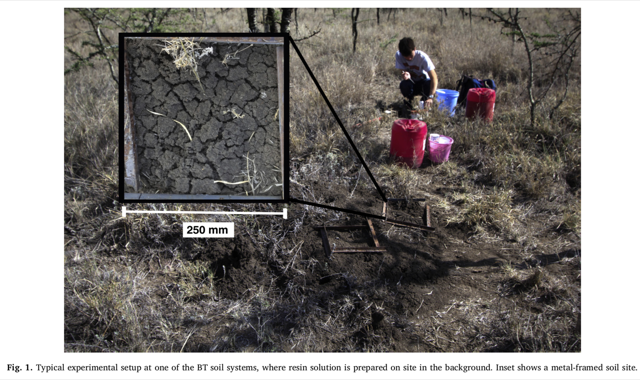Biophysical effects on soil crack morphology in a faunally active dryland vertisol

DeCarlo, K.F. and Caylor, K.K. (2019) “Biophysical effects on soil crack morphology in a faunally active dryland vertisol”, Geoderma, doi:10.1016/j.geoderma.2018.07.042.
Abstract:Faunal behavior in dryland ecosystems may physically influence swelling soil hydrologic and pedologic processes due to its contributions to soil crack formation. In order to provide a physical link between this faunal activity and pedological processes, we use a resin visualization technique and X-ray imaging to characterize the biomechanical influences of biocompaction (mega/meso-herbivores) and bioturbation (termites) on 3D crack morphology and topology in a faunally active dryland vertisol system. Results show increased soil cracking intensity due to faunal influence. However, this increased cracking diverged by faunal influence: bioturbation creates “surficial” (shallow, extensive) crack networks while biocompaction creates “systematic” (deep, narrow) crack networks, compared to a reference soil. Biocompacted soils also exhibit a memory of past wetting and drying events via vertically layered crack morphologies. Despite differences in these crack magnitudes between the faunal influences, crack structures show morphological and topological similarity as a topological network. These persistent differences in field crack systems may potentially create convectively-driven “hotspots” of enhanced water and carbon gas transport in dryland ecosystems as a result of crack formation, highlighting the importance of considering fracture behavior in both an ecological, atmospheric, and pedologic context.
